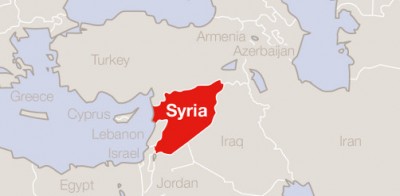Fuelling Tensions between Superpowers: Washington’s “No Fly Zone” Project in Southern Syria
Military Review & Analysis

Washington is thinking about creating a no-fly zone in Syria again. According to a new plan, it will be located at the border between Jordan and Syria. Recep Tayyip Erdoğan is a main lobbyist of the creation of buffer zones.
Despite the fact that Obama’s administration has turned back to considering this plan, it will be hardly put into practice.
The US security chiefs understand clearly that this plan needs strengthening of the US air and ground forces in Syria, major logistical and technical efforts.
Video
scroll down for (approximate transcript)
Transcript
The Russian military presence in the region makes this even harder than earlier. Any kind of a no-fly zone in Syria will fuel additional tensions between the two world powers. Another point is that without the US ground contingent, this zone will be controlled by the US local allies whose elites at least partly support terrorists in Syria. Despite the US pivot of Turkey noticed by SouthFront: Analysis & Intelligence in the recent videos, the situation remains complicated. At least, Turkey elites arent the only power which can support terrorists in Syria.
On account of the recent developments, the US has three main approaches in Syria:
First is to continue diplomatic efforts to counter Russian activity and recapture initiative in the region. Indeed, it means to allow a free hand to Russia to fight terrorism and support Assad. This kind of a defensive strategy isnt fully acceptable for the White House because of political and PR expenses.
Second is for opposition groups with mainly Kurds to be formed to build a pro-US force acceptable to a public opinion in the Syrian battlefield. The problem is that powers in Saudi Arabia will continue to supply arms and equipment to Al Nusra. It leads to strengthening of pro-Saudi militant groups and Al Qaedas entrenching in Syria. If Assad is overthrown or just go as result of a political solution, Al Qaeda will become a main Syrian power. SouthFront: Analysis & Intelligence hardly believe that Saudi elites will miss the chance to use this power in their own interests
Third is to establish a no-fly or a buffer zone aligning itself with a side of the conflict definitely. This will lead to the problems showcased by us in the videos beginning. We are sure that Pentagon and CIA understand this threat.
Thus, the US will continue to conduct a joint strategy grounded on these approaches. It will include the most favourable ways to hold the US interests in Syria. A No-fly zone and buffer-zone projects will be hardly supported by the US on the official level. Nonetheless, Saudi Arabias activity aimed to supply terrorists with arms and equipment wont be prevented in the nearest future, especially in Idlib. Its aimed to show that the Syrian offensive supported by the Russian Air Force doesnt work.
Indeed, this approach has a big strategic problem. In case of the US-led ground offensive, Syrian Kurds will probably expand their actions in regions without Kurdish population. After the storm of Raqqa, they wont become a major power in the most part of the Syrian territory. So, in the mid-term perspective, the US will need to improve its efforts in Syria by new approaches and ideas. One of them could be to continue the local efforts to counter ISIS presence de-facto assisting Russia in the region. On October 10, Russia and the USA signed an agreement regulating the operations of their air forces in Syria. This is a fact confirming the possibility. Nonetheless, if the US considers to counter Russian presence by a hard means, it could turn to the idea of supporting pro-Saudi terrorist groups as al Nusra.

